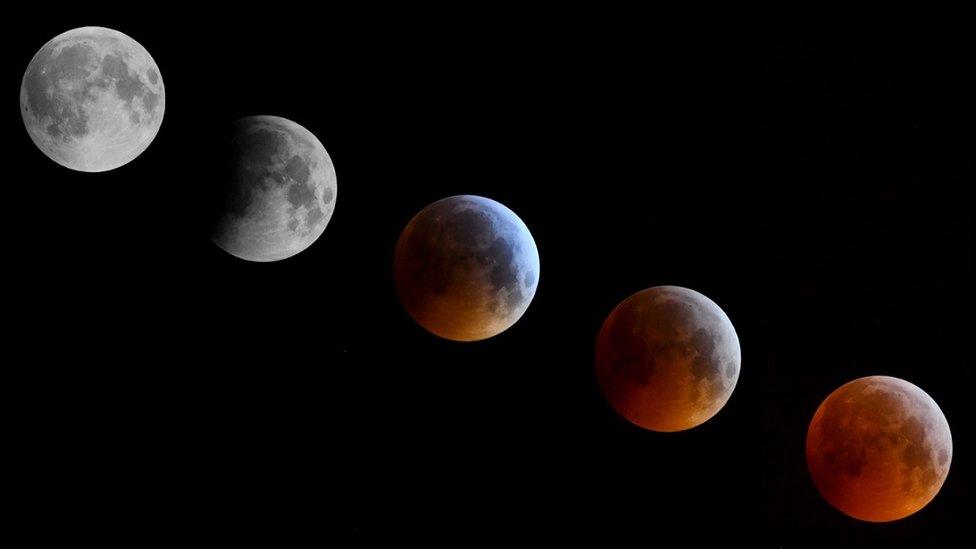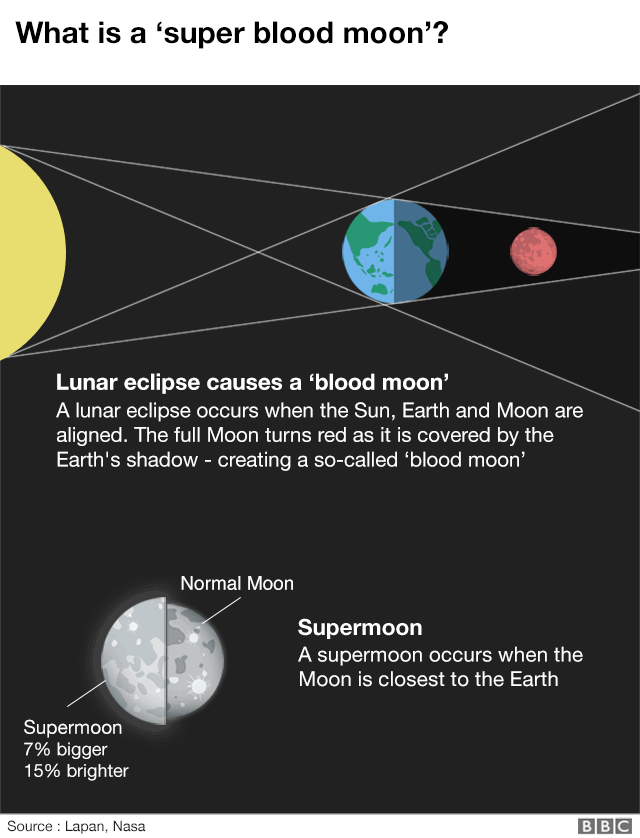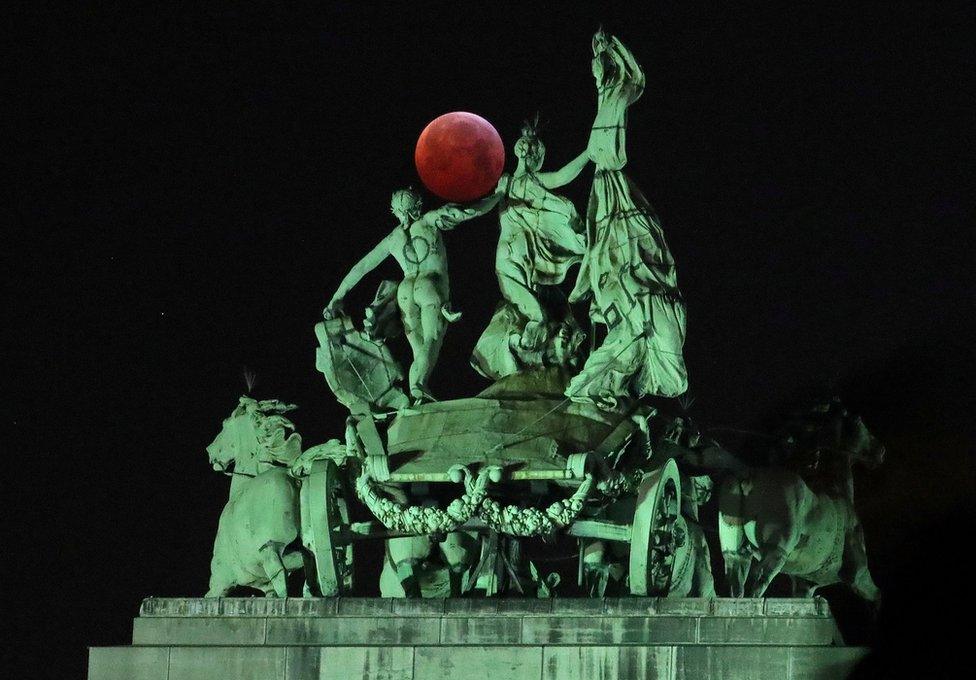Skywatchers see 'super blood wolf moon'
- Published

BBC News' stills photographer Jeff Overs captured these views of the eclipse in Brighton, UK (montage)
A lunar eclipse, which some are referring to as a "super blood wolf moon", has delighted skywatchers around the world.
During the spectacular event, the Earth's natural satellite turns a striking shade of red.
The entire eclipse was visible from North and South America, as well as parts of western Europe (including the UK) and north Africa.
What is a total lunar eclipse?
This kind of eclipse occurs when the Earth passes precisely between the Sun and the Moon.
In this situation, the Sun is behind the Earth, and the Moon moves into the Earth's shadow.


Will the moon appear red?
Yes. Some commentators are referring to the event as a "super blood wolf moon". The "super" part comes from the fact that the Moon will be near its closest approach to the Earth - when it will be marginally bigger in the sky than usual. The "wolf" part comes from the name given to full moons in January - "wolf moons".
Walter Freeman, an assistant teaching professor at Syracuse University in New York state, said: "A little bit of sunlight is refracted by the Earth's atmosphere and reaches the Moon, bending around the edges of the Earth. This small amount of red light still illuminates the Moon enough for us to see it."

The moon seen beside a quadriga on top of the Cinquantenaire arch in Brussels
Where was it visible?
The eclipse began at 02:35 GMT on Monday and ended at 07:49 GMT, but the point of greatest eclipse occurred at 05:12 GMT.
In the UK, the Moon was above the horizon throughout the eclipse, though from the extreme south-east of England the Sun had risen as the eclipse ended.
Elizabeth Rizzini explains the "super blood wolf moon" - and forecasts the weather for UK skywatchers on Monday
This eclipse was also visible in north-western France, north-western Spain, Portugal, a small part of west Africa, almost the whole of North and South America, the eastern Pacific, and the north-eastern tip of Russia.
Was it safe to look at?
While solar eclipses are dangerous to view directly, the light from lunar eclipses is much fainter and so is completely safe to view without special equipment.
Why is it significant?
The event was the last chance for skywatchers in the UK to see a total lunar eclipse in its entirety until 2029 - weather permitting.

Stages of a total lunar eclipse
Penumbral eclipse begins: This starts when the outer (and lighter) part of the Earth's shadow begins moving across the Moon
Partial eclipse begins: This stage takes hold when the darker, inner part of the Earth's shadow (umbra) begins covering the Moon
Total eclipse begins: Also called totality, this occurs when the umbra completely covers the Moon, turning it a reddish brown colour
Maximum eclipse: The mid-point of totality
Total eclipse ends: The umbra starts moving away from the Moon's face after totality
Partial eclipse ends: Earth's umbra completely leaves the surface of the Moon
Penumbral eclipse ends: The outer part of the shadow (penumbra) completely moves away from the Moon
Source: timeanddate.com